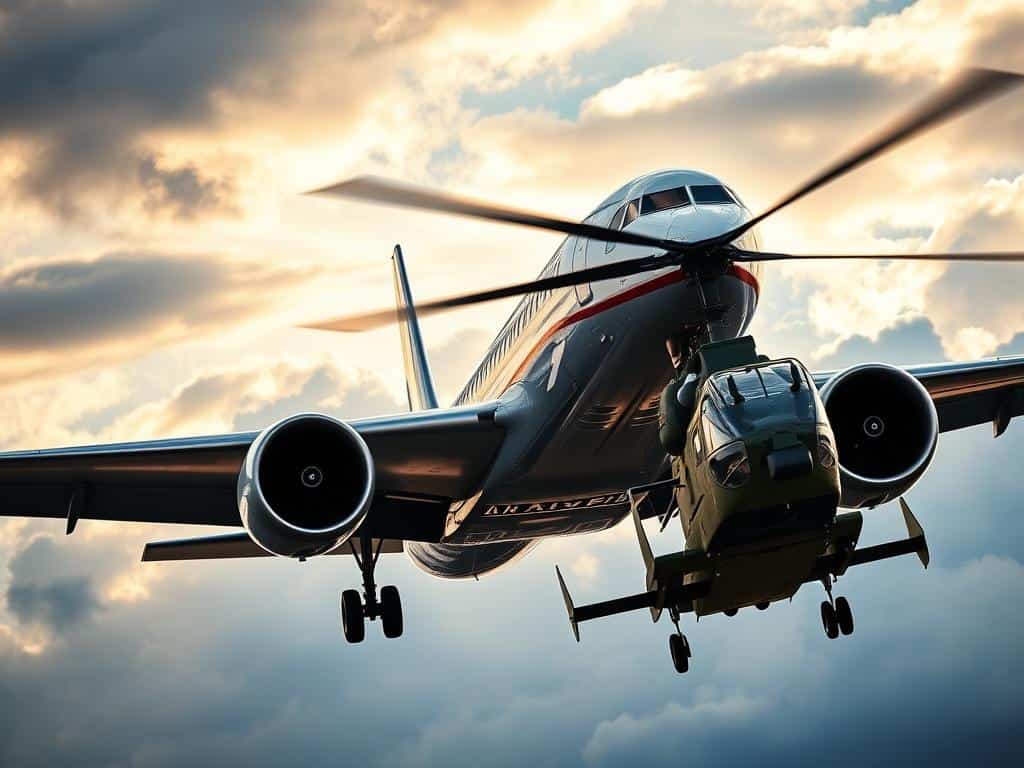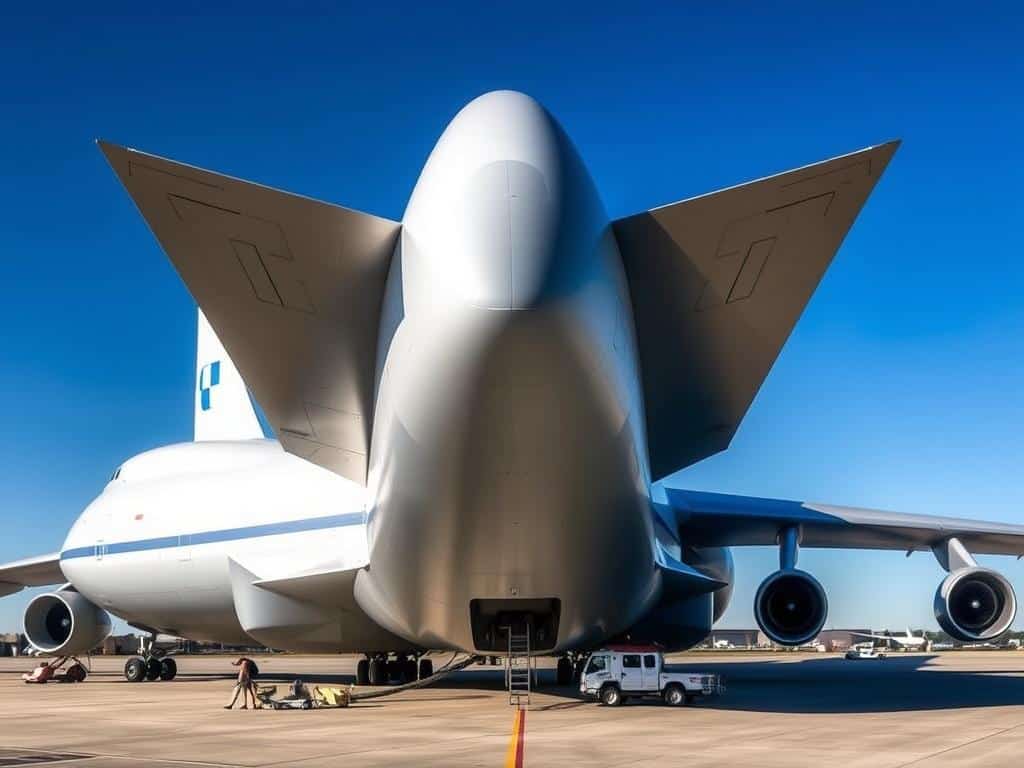Ever felt your heart racing when the plane shakes? You’re not alone. Many people worry about turbulence, seeing it as a sign of danger. But, the truth is, turbulence is often safer than we think.
Learning about turbulence can ease our worries. It lets us enjoy flying more. So, let’s explore the facts about turbulence.
On a plane, turbulence can be a distraction. But, it’s not as scary as it seems. Most injuries from turbulence happen because people aren’t buckled in. This shows how important safety is during flights.
Knowing how planes stay stable can make us feel better. It shows that flying is safe. So, let’s learn more about turbulence and why pilots stay calm.
Air travel is getting more common, and turbulence worries are normal. But, by understanding turbulence, we can face our fears. Let’s uncover the truth about turbulence and why pilots stay calm.
Key Takeaways
- Turbulence injuries mainly happen when people don’t wear seatbelts.
- Most planes are built to handle turbulence, keeping flights stable.
- Knowing why turbulence happens can make flights less scary.
- Severe turbulence is rare, and most passengers are safe.
- Following safety rules can greatly reduce the risk of injury.
Understanding Turbulence and Its Causes
Turbulence is often misunderstood and can make passengers anxious. It’s important to know that turbulence is just air moving in waves, not a danger to safety. These air movements happen for many reasons, making turbulence a normal part of flying.
What is Turbulence?
Turbulence means the air moves in irregular ways, affecting an airplane’s flight. Though it might feel scary, most planes are built to handle it safely. Modern planes are designed to keep everyone safe during turbulence.
Clear Air Turbulence (CAT) is a type of turbulence that happens in smooth flying. It usually happens between 30,000 and 40,000 feet.
Common Causes of Turbulence
Many things can cause turbulence. Storms and big temperature changes can disturb the air. Mountains can also cause turbulence, as can fast-moving jet streams.
These conditions can create air pockets that affect the plane’s path. Pilots try to avoid thunderstorms to prevent severe turbulence. Thunderstorms can make flying very hard.
How Weather Affects Flight Stability
The weather greatly affects how stable a flight is and can make turbulence worse. Growing storm clouds can cause turbulence even before they reach. Climate change also adds to the problem, with studies showing more turbulence in North America and the North Atlantic by 2080.
Knowing how weather and turbulence interact helps passengers feel more ready when they fly.
Turbulence Facts: Are We Really in Danger?
Turbulence can make passengers nervous, but knowing some facts can help ease those worries. In flying, turbulence is more of a nuisance than a danger. Planes are built to handle much stronger forces than what turbulence offers. From 2009 to 2022, only a few serious injuries happened due to turbulence.
The True Nature of Turbulence
Turbulence is often misunderstood. While it can cause injuries, the chances are very low. With over four billion people flying each year, such incidents are rare. About 28% of turbulence accidents from 2009 to 2018 happened without warning, showing that big problems are rare.
Safety Design of Aircraft
Modern planes are made with top safety in mind. For over 40 years, makers have used new ways to make planes stronger. This means planes can usually handle even the toughest turbulence without issue. Almost 40% of turbulence accidents are from clear-air turbulence, which radar can’t spot. Thanks to ongoing improvements, planes can handle much more than what happens on most flights.
Turbulence vs. Structural Integrity
History shows that turbulence rarely causes plane damage or accidents. Most injuries happen when people aren’t buckled in during sudden bumps. A 2021 report by the National Transportation Safety Board found many injuries happen during getting ready for service, not just during turbulence. Airlines spend a lot of money each year to keep flights stable, showing how important it is.

Pilots’ Perspectives on Turbulence
When I fly, turbulence is a common topic. It’s important to know how pilots handle it. This knowledge makes passengers feel safer.
Our training is strict. It helps us manage turbulence’s unpredictability well.
Routine Handling of Turbulence
I face different levels of turbulence during flights. From light to extreme, each needs a specific response. I adjust speed and altitude to keep the flight stable.
For clear air turbulence (CAT), I make gradual changes. This keeps everyone comfortable and safe.
Pilot Techniques for Managing Bumpy Flights
I watch weather patterns and talk to air traffic control. When turbulence is severe, I slow the plane. This helps keep it stable.
Slowing the plane is key, like when flying near thunderstorms. It helps avoid dangerous situations.
Trainings Pilots Undergo for Turbulent Conditions
My training covers meteorology and aerodynamics. I also practice in simulated exercises. This prepares me for turbulence.
Our training keeps us ready for any weather. We constantly improve our strategies. This shows our dedication to safety.
Conclusion
Turbulence can make flights uncomfortable, but it’s not a safety risk. Knowing the facts about turbulence can help reduce anxiety. In the U.S., about 58 injuries happen each year due to turbulence.
Most of these injuries happen to people not wearing seat belts. This shows why it’s key to always wear your seat belt, even when the sign is off.
Pilots are well-trained to manage turbulence, and planes are built to withstand it. The chance of a plane crashing because of turbulence is very low. Turbulence usually lasts only 10-15 minutes during a flight.
By learning about turbulence safety and trusting flight crews, I can make my flying better. Scientists think extreme turbulence might happen more often in the future. This means we need to stay safe and aware.
While no seat is completely free from turbulence, some are smoother than others. Seats in the front or over the wings are generally better. Staying calm and informed helps me enjoy flying even more.



